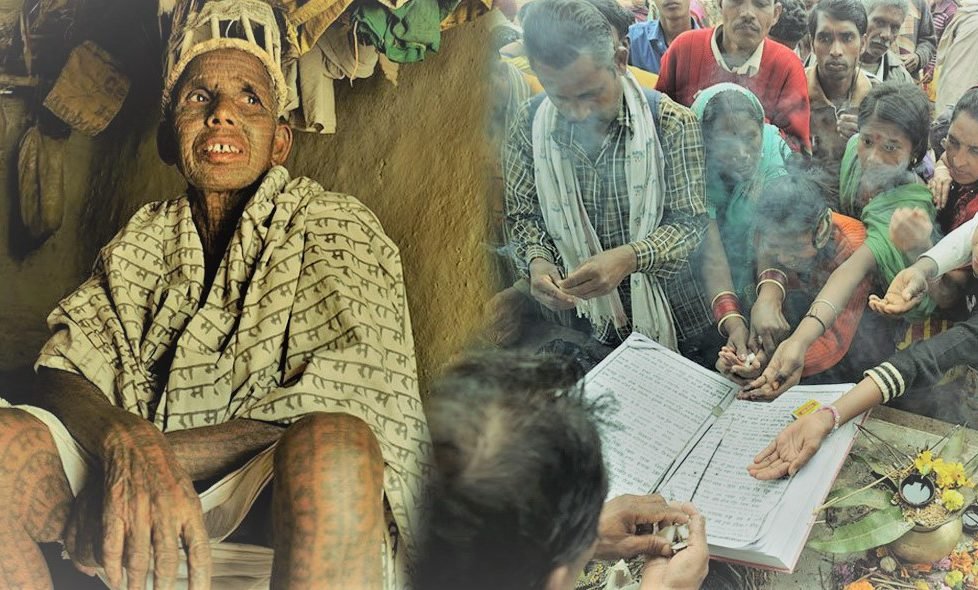Ramnamis: Ardent devotees of Lord Ram
The reason behind tattooing 'Ram' is to spread the message of the omnipresence of God. They claim the God cannot be seen but exists “within the self.” These Ramnamis call themselves Ramupasak.

The reason behind tattooing 'Ram' is to spread the message of the omnipresence of God. They claim the God cannot be seen but exists “within the self.” These Ramnamis call themselves Ramupasak.

Chhattisgarh is a comparatively newly formed state of India. It is well-known for its tribal population, but only very few people know about the unique traditions of these indigenous people of Chhattisgarh. One such unique community of people is known as the “Ramnami community.”
A community of Hindus which was considered low and not allowed entering temples. They peacefully opposed the caste system by permanently imprinted their whole body with the name of ‘Ram’ ( राम ). Even their eyelids inked with the name of ‘Ram’.
This way they started worshiping ‘Nirgun Ram’ as a peaceful protest against societal restrictions, and because of these tattoos this community is called ‘Ramnami Community.” The reason behind tattooing ‘Ram’ is to spread the message of the omnipresence of God. They claim the God cannot be seen but exists “within the self.” These Ramnamis call themselves Ramupasak.

The religious movement of Ramnamis started in 1890 by a man named Parshu Ram Bhardwaj, who was restricted to enter into the temple. This movement of Ramnamis was apolitical and devoid of standard hierarchical structure.
Back then most of the people of this community were illiterate, and they taught themselves to read and write to read Ramayana. They also developed their own musical and clothing tradition. Their cloth also has imprints of ‘Ram.’ This became a movement and spread across dozens of villages of four districts in Chhattisgarh and the community grew to a membership of two lakh people.
The design of these Ram tattoos is known as ‘Godna’ in their local language. They use natural indigenous ink for these tattoos, and they promote a simple lifestyle. The soot of a kerosene lamp with water is used for making dye for tattooing. Tattooing starts at an early age; before turning two every child must have at least a ‘Ram’ tattoo. It takes almost two weeks to get inked in the whole body. After inking the first few days are hardest, the needle stings follows pain and swellings. The swelled mouth makes eating, drinking, and smiling difficult.
Males in the Ramnami community wear a ‘white lungi’, a traditional Indian garment, and a hat made up of peacock feather known as ‘Mukut.’ They do not drink or smoke, and treat everybody with equality and respect.

Homes of people of Ramnami community have “Ram Ram” written in black on the outer and inner walls. Owning Hindu epic ‘Ramayana’ and chanting Ram every day is a must in this community.

Nowadays, young Ramnamis usually avoid full body-tattoos because they also travel to other regions of the country to study and work. Since 1955, after the ban of caste-based discrimination, they feel all are the same because the lives of lower-caste have improved. Still, children born in this community required to be tattooed somewhere on their bodies, at least once by the age of two.
Sources:
DISCLAIMER: The author is solely responsible for the views expressed in this article. The author carries the responsibility for citing and/or licensing of images utilized within the text.
1 Comment
You must be logged in to post a comment.

Do you feel right to add the name of God everywhere in the body in such faith, during which there would be endless pangs..?